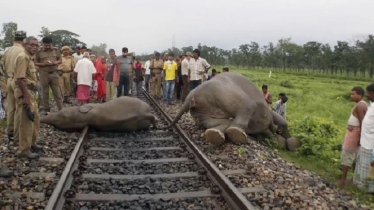
Protected areas are intended to protect the species and habitats they contain. When well-managed, they can result in clean water, healthy soils, and reduced poaching pressure, all of which can spill over to nourish and replenish surrounding areas. But new research from Borneo suggests we could improve the performance of these sanctuaries of life by better selecting where to locate them in the first place.
Focusing protection efforts in forest areas with not only high biodiversity but also high risk of development could significantly improve conservation outcomes for key measures of biodiversity, according to the study. It used the Sunda clouded leopard (Neofelis diardi), a wildcat about the size of a medium dog, as a proxy for these measures.
Such an “assertive” approach to protected area design is becoming a matter of urgency in Borneo, where studies show that massive infrastructure projects underway will significantly erode core habitats for clouded leopards, even inside existing protected areas.
However, this recommended strategy stands in stark contrast to prevailing practices the world over. Multiple studies show that, globally, protected areas are typically situated in rugged and remote landscapes that are safeguarded more by their inaccessibility to development, rather than by proactive conservation planning.
The concentration of conservation efforts in areas with few competing interests could risk overlooking more development-prone, but nonetheless ecologically valuable, areas. “We risk using our limited attention, social capital, financial capital to do stuff that is not in fact advancing the protection of nature (or, at least, is doing less than the same resource could do elsewhere),” Alexander Pfaff, a professor of public policy, economics and environment at Duke University in the U.S., who was not involved in the study, told Mongabay.
The existing network of protected areas in Borneo appears to reflect global trends, largely encompassing steep terrain that’s unsuitable for human use. It’s “highly suboptimal” for ensuring the long-term survival of clouded leopards, according to the study published in Nature Biodiversity.
Help them ‘while we still can’
The team of researchers from the University of Oxford in the U.K. chose the clouded leopard as a metric for biodiversity because of the species’ high dependence on forest cover. “Clouded leopards are emblematic of forests and forest conservation,” study lead author Ewan Macdonald, a conservation scientist at Oxford, told Mongabay.
As arboreal top predators, clouded leopards require healthy and dense tracts of forest replete with a wide assemblage of other flora and fauna. This means their presence or absence can be used as a barometer for broader ecosystem health. If clouded leopards are doing well, there’s also a good chance that other forest-dependent species, such as elephants, orangutans, proboscis monkeys or hornbills, are also in good shape.
Macdonald added that clouded leopards are still fairly widely dispersed across large areas, unlike their bigger cat cousins, tigers and leopards, which have disappeared from much of their range in Southeast Asia. “We wanted to set out a plan, as it were, for a species while we can still do something for them,” he said.
Sunda clouded leopards are categorized as vulnerable on the IUCN Red List due to steep population declines driven by the loss of roughly one-third of their habitat across their range islands of Borneo and Sumatra over the past two decades.
Major highways, urban expansion, and clearing of forest for oil palm plantations have not only eroded the total size of their habitat, but have also severed important movement corridors around the periphery of core habitats, impeding the potential for genetic exchange between newly isolated populations. “It’s the nibbling away at the edges of these big blocks of habitat that is most impactful for large animals like clouded leopards, elephants and orangutans,” Macdonald said.
Models point to a proactive approach
To investigate the impact of different approaches to protected area design in Borneo, Macdonald and his colleagues used clouded leopard distribution data from prior camera-trapping studies to model the outcomes of seven different scenarios.
First, they quantified the impact of adopting two extremes of approach to protected area management. On one hand, exclusively protecting areas with minimal development threat; and at the other extreme, focusing on areas under high development pressure. They then looked at the business-as-usual scenario representing Borneo’s current state of protected areas and rates of forest loss, and also the effects of adding various combinations of more or less at-risk areas to the existing network.
They found that proactive scenarios that focused on at-risk areas outperformed other strategies. These approaches consistently retained higher levels of forest connectivity and genetic diversity in clouded leopards and preserved more forest carbon. The best-performing option projected a more than 50% improvement in habitat connectivity compared to the current state of conservation areas in Borneo.
Rebecca Runting, a spatial planning researcher at the University of Melbourne in Australia, who was not involved in the study, said she valued the study’s insights into how more assertive conservation can yield benefits. “This is especially important given that not just in Borneo, but in most places around the world, the existing protected area network is dominated by remote and lower-risk locations,” she said.
However, proactive strategies face higher economic and political challenges, Runting noted. For one, the land itself is likely to cost more to acquire. Then there are likely to be conflicts of interest with would-be developers and communities who stand to gain from potential developments. “This is where a risk-balanced approach to protected area design can be practical,” she said, “of extending the existing protected area network with key high-risk, high-value and high-biodiversity locations, but balancing them with the lower-risk areas that are more likely to persist into the future.”
Balancing the trade-offs
Ways exist to resolve the costs and potential conflicts that arise from proactive approaches, according to Macdonald, and leveraging them to incentivize policymakers to make proactive conservation decisions is paramount. One solution is to demonstrate the costs and benefits of developing land or leaving it in its natural state through policy interventions, such as payments for ecosystem services schemes like REDD+, he said. “Monetizing the carbon stored in the forest is one option, showing the land has economic value by remaining as forest, not to mention the social and cultural values it might have to people.”
The new findings will now feed into a new spatial planning toolkit Macdonald and his colleagues are developing. The culmination of a larger body of clouded leopard research, which has so far amassed 6 million camera-trap images, the toolkit will enable policymakers to make better decisions on which areas should be preserved for clouded leopards, and which areas would be less harmful to convert for impending developments like highways, urban expansion, logging concessions and plantations.
“Answers to these development decisions are for local policymakers to decide,” Macdonald said, “but we want to try and provide the tools that give them the information that will help them make those decisions in an informed way.”





